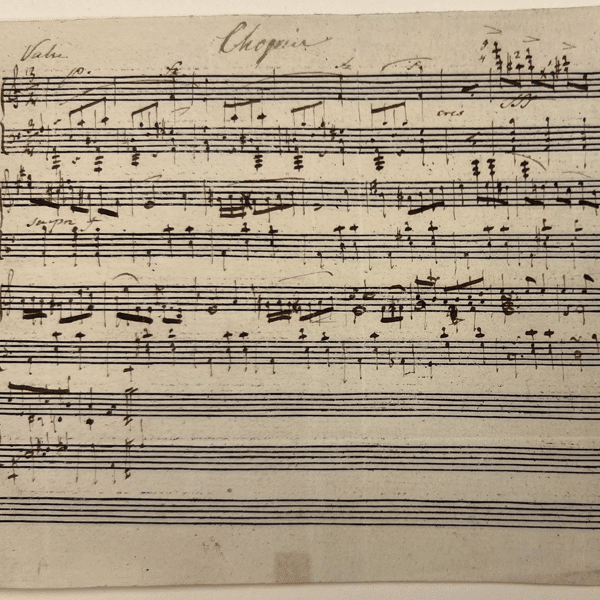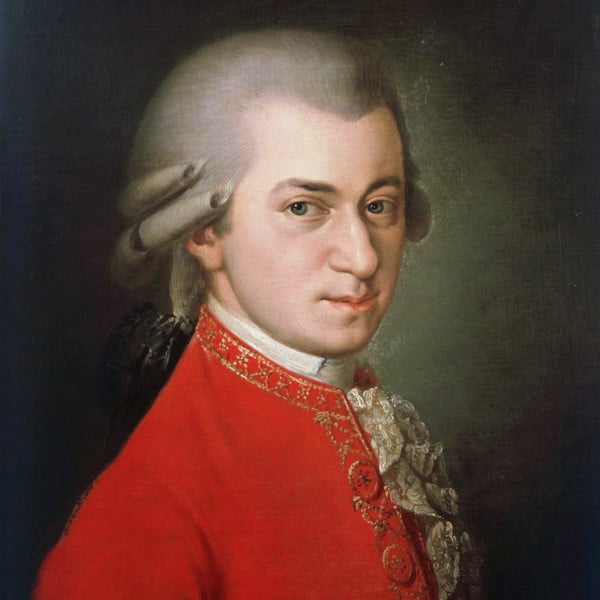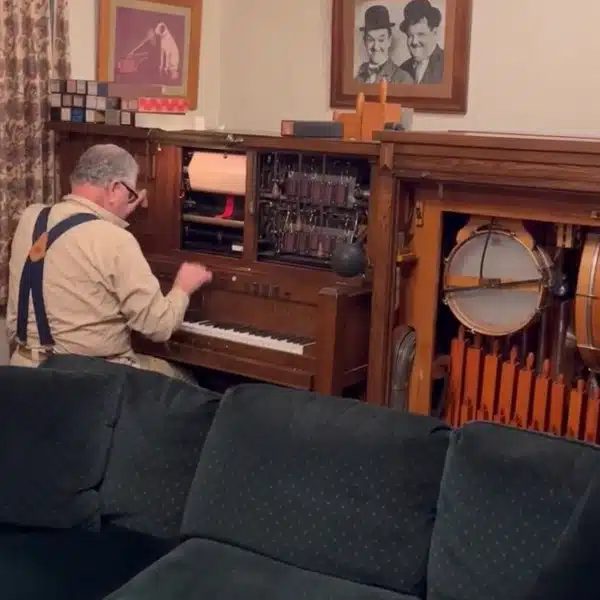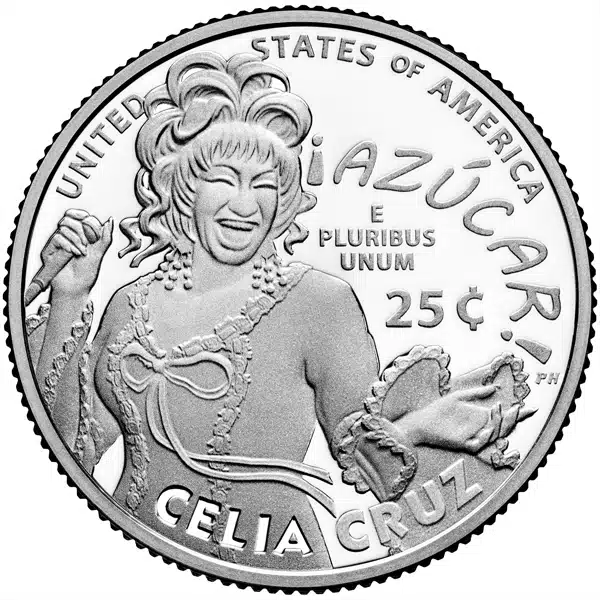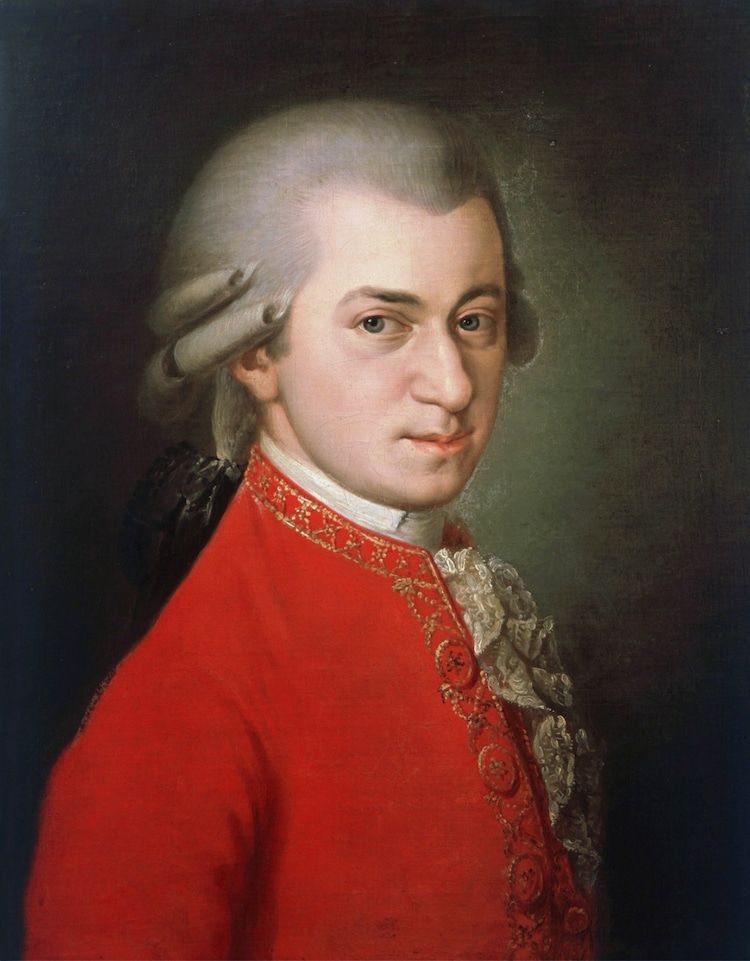
Barbara Krafft, Posthumous Portrait of Wolfgang Amadeus Mozart, 1819 (Photo: Wikimedia Commons, Public domain)
Few composers are as well renowned as Wolfgang Amadeus Mozart (1756–1791) . Alongside Beethoven, he is one of the most influential musicians of the Classical period, which dominated Europe between 1730 and 1820. His prodigious talent—which began in early adolescence—quickly flourished with the aid of his musical family, and he embarked on a prolific creative career, creating over 600 works within his brief 35 years.
Mozart was born in Salzburg in 1756, which at the time was a part of the Holy Roman Empire. He spent the majority of his childhood composing and performing music for numerous royals, including Prince-elector Maximilian III of Bavaria and Archduke Ferdinand. He continued to travel throughout adulthood, performing for European aristocracy, and continuing to create sonatas, symphonies, and operas. After his death, his friend and fellow composer Joseph Haydn said, “posterity will not see such a talent again in 100 years.”
Scroll down to learn 8 facts about Mozart.
Learn 8 facts about the classical music composer Wolfgang Amadeus Mozart.
Mozart's father and sister were musical, too.
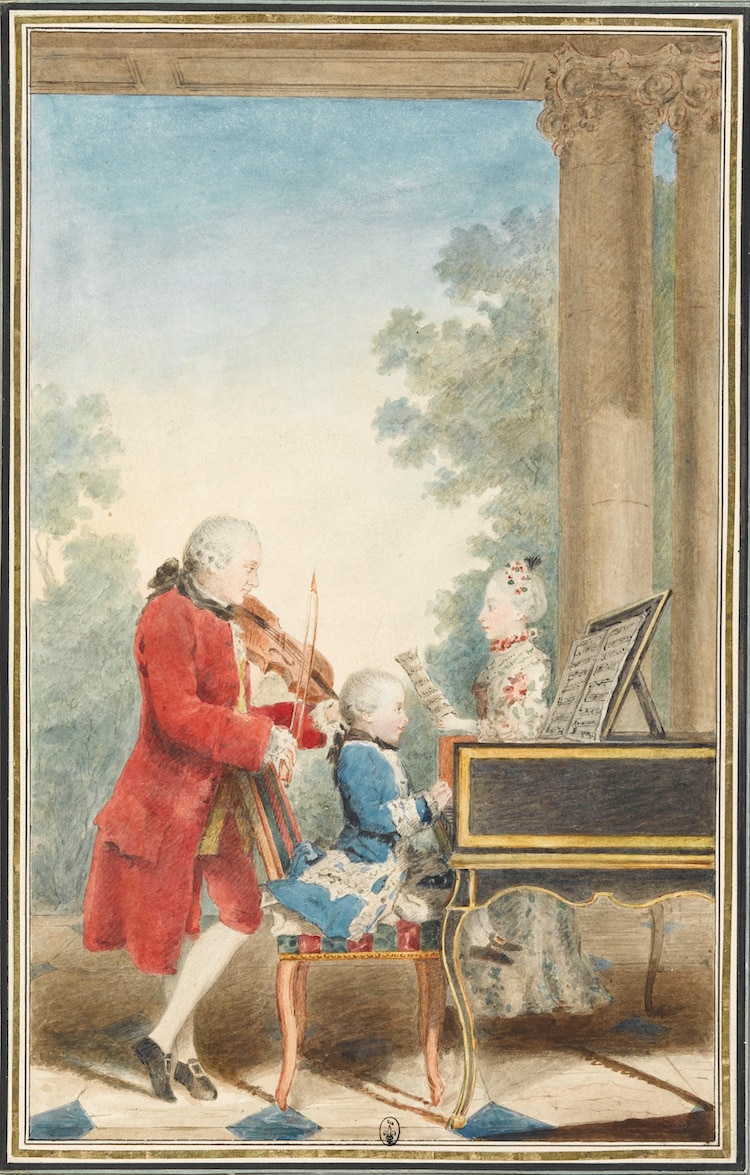
Louis Carrogis Carmontelle, “The Mozart family on tour: Leopold, Wolfgang, and Nannerl,” 1793 (Photo: Wikimedia Commons, Public domain)
Mozart and his older sister Maria Anna (nicknamed “Nannerl”) were the only surviving children of their parents, Leopold and Anna Maria Mozart. Leopold was a former musician and composer, who was appointed as the fourth violinist for the ruling Prince-Archbishop of Salzburg. He began teaching the 7-year-old Nannerl and 3-year-old Mozart music, both of whom displayed an affinity for different instruments.
Later, between 1763 and 1766, Leopold, Nannerl, and Mozart when on a tour throughout Europe, performing for royals like Empress Marie Theresa. During this time, Mozart's reputation as a child prodigy grew enormously.
He began writing his own compositions at age 5.
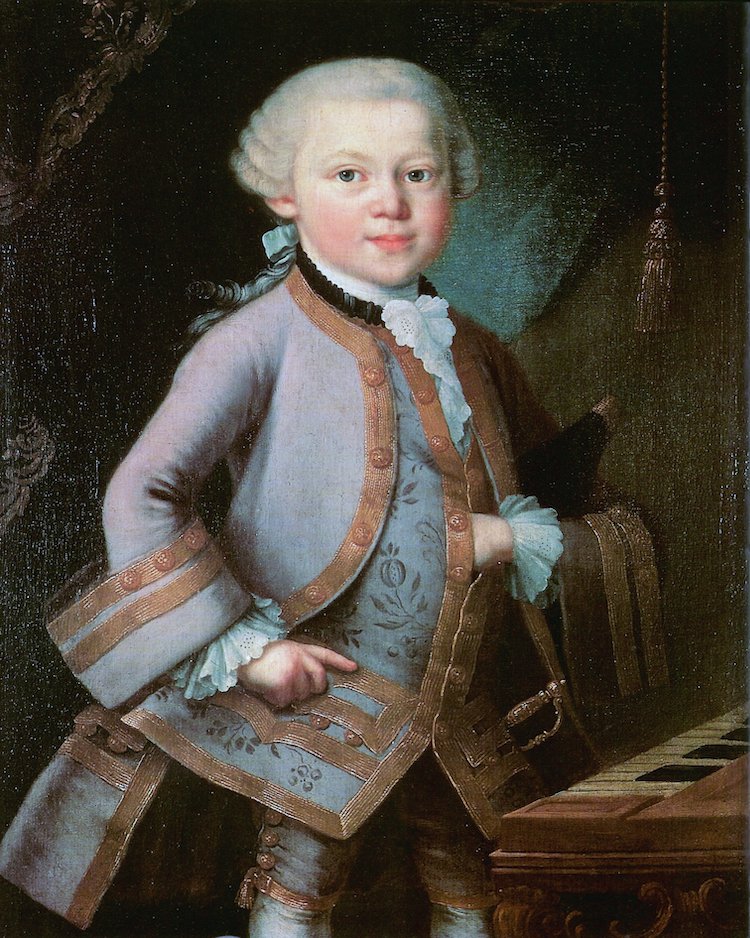
Anonymous (sometimes attributed to Pietro Antonio Lorenzoni, “Portrait of Wolfgang Amadeus Mozart at age Seven,” 1763 (Photo: Wikimedia Commons, Public domain)
When Mozart was about 5 years old, he began creating his own compositions which his father wrote down and collected in the Nannerl Notenbuch. Andante in C, K. 1a was most likely his first piece, a short composition that was intended to be performed on the harpsichord. It was quickly followed by Allegro in C, K. 1b and Allegro in F, K. 1c.
Mozart met Marie Antoinette.
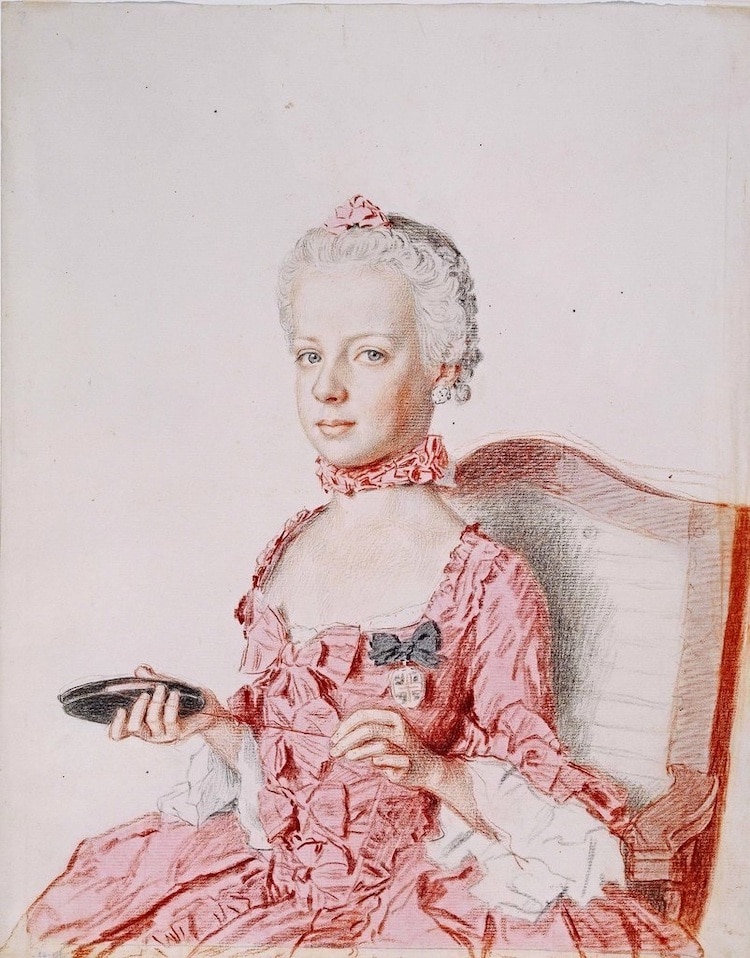
Jean-Étienne Liotard, “Portrait of Archduchess Marie Antoinette of Austria, Future Queen of France, at Age Seven,” 1762 (Photo: Wikimedia Commons, Public domain)
During Mozart and his family's tour of Europe, he was invited to play at the royal court of Maria Theresa, Empress of the Holy Roman Empire. There, biographer Eric Blom describes a meeting between the 7-year-old Mozart and the young Marie Antoinette, who was two months his senior. Supposedly, Mozart slipped on a polished floor and Marie Antoinette helped him to his feet. Afterward, Mozart was said to have proposed to the future queen of France.
Mozart wrote his first opera at age 11.
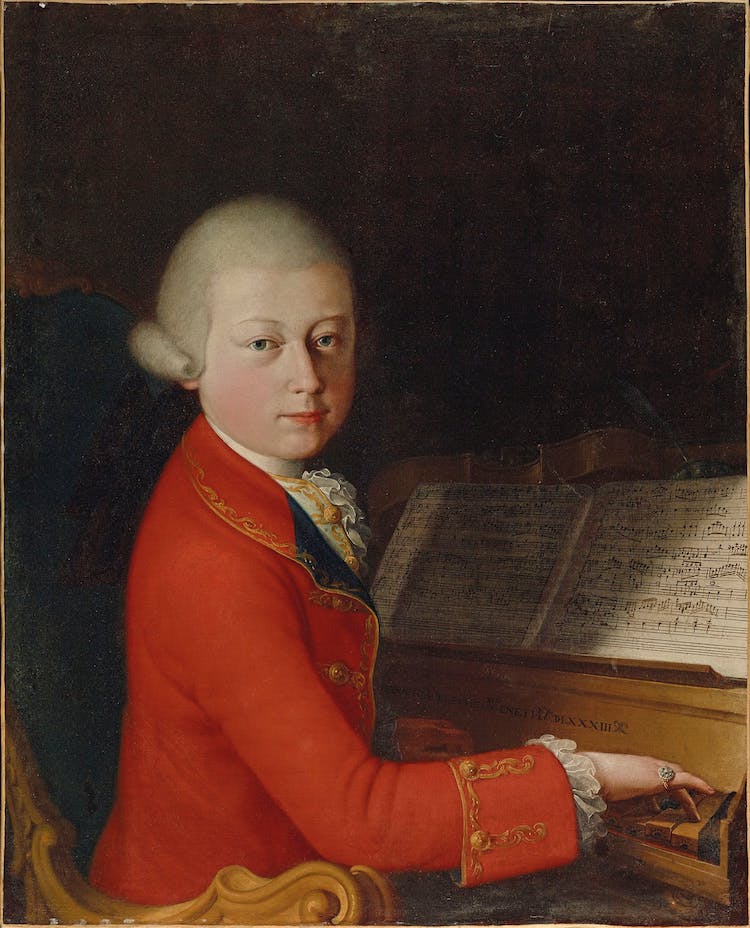
Attributed to Giambettino Cignaroli, “Portrait of Wolfgang Amadeus Mozart at age 13–14,” c. 1770 (Photo: Wikimedia Commons, Public domain)
In 1767, when Mozart was 11 years old, he completed his first proper opera, entitled Apollo et Hyacinthus. Divided into three acts, it is based on the myth of Hyacinth and Apollo, in which Apollo accidentally kills his lover by throwing a discus. It was commissioned by the Benedictine University in Salzburg and only performed once during his lifetime.
He was very fashionable.
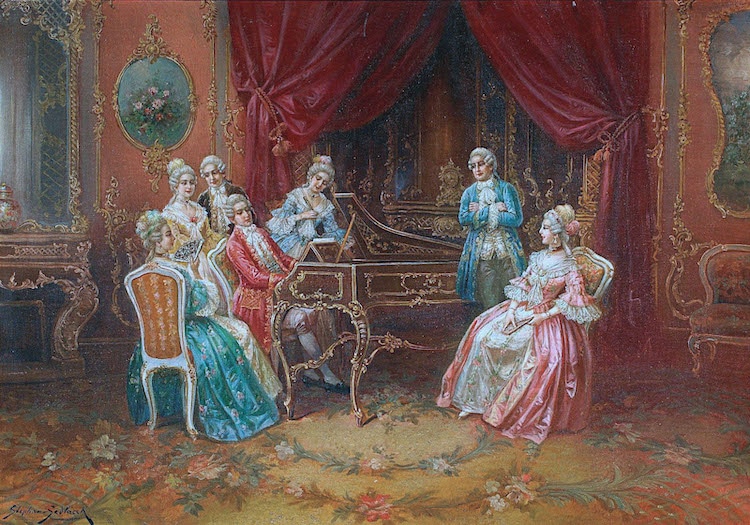
Stephan Sedlaczek, “The Young Mozart at the Spinet,” 1936 (Photo: Wikimedia Commons, Public domain)
Mozart was known for having many indulgences, most notably clothing. His tenor Michael Kelly described his appearance: “[He] was on stage with his crimson pelisse and gold-laced cocked hat, giving the time o the music to the orchestra.”
In spite of his great success and numerous commissions, Mozart's shopping vice caused considerable financial strain throughout his life.
Mozart created over 6oo compositions during his lifetime.
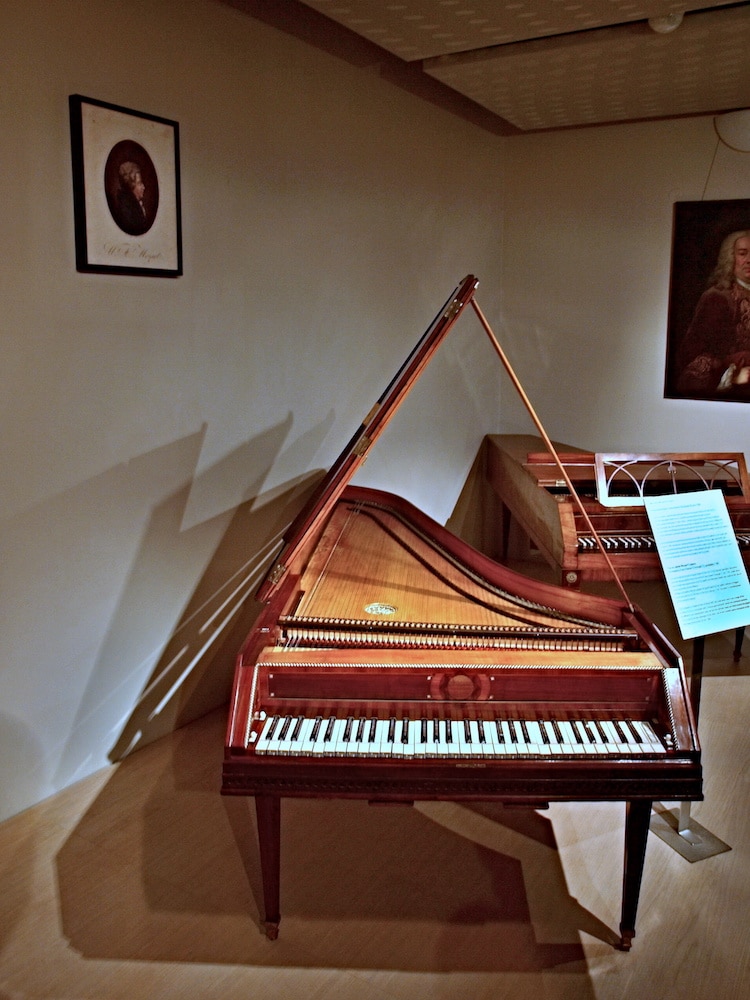
Fortepiano played by Mozart in 1787, Czech Museum of Music, Prague (Photo: Wikimedia Commons, CC BY-SA 3.0)
Mozart was incredibly prolific during his lifetime and kept to a full schedule. He often broke up his writing sessions into one block in the morning, afternoon, and then worked through the evening. By the end of his life, he wrote over 600 works, including symphonies, operas, and concertos.
He didn't finish his last composition.
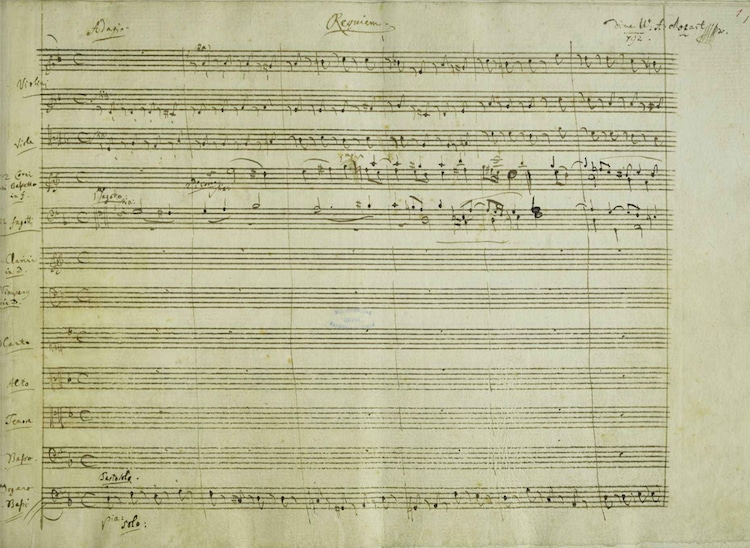
A section of a page from the manuscript of W.A. Mozart's Requiem, K 626, 1791 (Photo: Wikimedia Commons, Public domain)
At the age of 35, Mozart showed signs of severe illness but continued to work for months. During this time, he completed one of his most acclaimed pieces like The Magic Flute, and began working on his Requiem.
He died on December 5, 1791, without finishing his final composition.
His death most likely wasn't caused by poison.
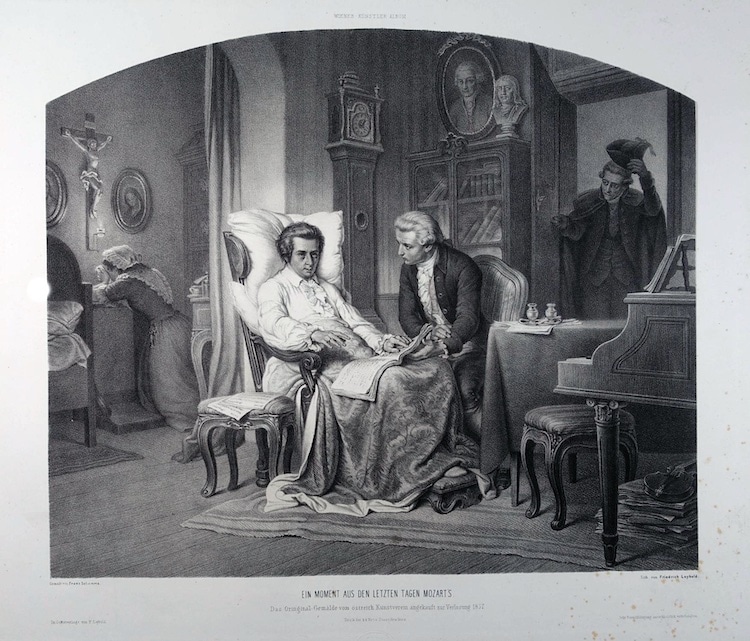
Franz Schramm, “Moment from the Last Days of Mozart,” 1857 (Photo: Wikimedia Commons, CC BY-SA 3.0)
Due to Mozart's premature death and his obscure symptoms, there are many theories about what caused it. For a time, it was believed that one of Mozart's rivals Antonio Salieri may have poisoned him. Reportedly, Mozart himself claimed he was poisoned when he was on his deathbed.
Today, most historians agree that Mozart was most likely not poisoned, and instead died of some sort of illness, such as strep, the flu, or even mercury poisoning.
Related Articles:
8 Facts About the Classical Music Composer Ludwig van Beethoven
Watch Four Talented Musicians Use Only One Cello to Play a Difficult Classical Piece
Researchers Discover This One Mozart Sonata Helps Alleviate Symptoms of Epilepsy















































































